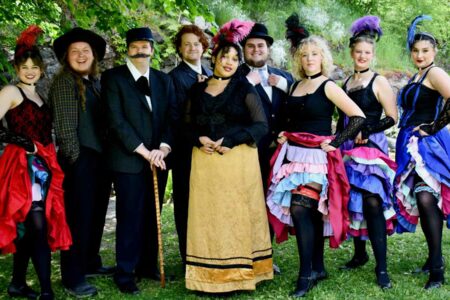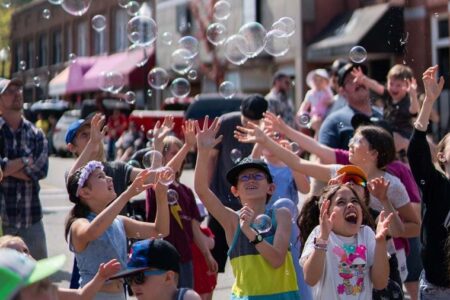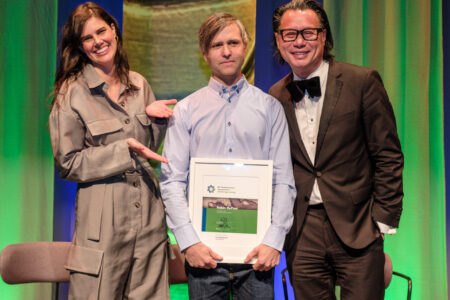Editorial: Seven Summits Centre For Learning is now partnered with SD 71; how is that working?
Thanks to the Seven Summits Centre for Learning (Seven Summits), Rossland still has Kindergarten to Grade 12 (K -12) education within its city limits. When School District 20 decided to close Maclean Elementary School, sell that building and move its former students into the former Rossland Secondary School building, and bus Grade 10, 11 and 12 students down the hill to the brand-new J.L Crowe Secondary School, a group of Rosslanders dedicated to maintaining K – 12 education within Rossland got busy. Very busy. And so Seven Summits was born.
Now, it offers more courses than ever — including more languages, robotics, and now French Immersion. From the Seven Summits website, this announcement: “Anyone who wishes to continue their French Immersion studies can go the full distance with their French and graduate with a Double Dogwood Diploma (meaning they are proficient in both English and French). Please contact us here if you would like to learn more.”
After three years of operation as an independent Distance Learning school with the Vancouver-based “SelfDesign” distributed learning program, Seven Summits had to find a new education partner when the funding to SelfDesign from the Ministry of Education changed, which would have meant a substantial funding cut to an already very lean organization. Seven Summits had two options: operate as an independent school without Self Design, or find a school district with a good distance learning program that wanted to work with Seven Summits as one of its “distributed learning facilities.”
Seven Summits had approached a number of school districts about the possibility of working with them, and School District 71 (Comox Valley) was the most interested. It also offered the best selection in its distance learning program, called “Navigate.” At first, it looked like an arrangement might not be possible, said Ann Quarterman, Operations Manager of Seven Summits, because SD 71 was under “funding protection” — meaning that if a district’s enrolment numbers seemed to be declining, that district could apply for “funding protection” status to ensure that its funding — but only for “general operations” — did not decline by more than 1.5% in a year ; but, if their enrolment numbers went up again, they would still be stuck at that level of funding. SD 71 had applied for funding protection. The addition of Seven Summits students would not entitle them to any additional funding. Then, SD 40 (New Westminster) withdrew from the distance learning field, and SD 71 picked up SD 40’s 250 full time equivalentdistance learning students for its program. Suddenly, the partnership between SD71 and Seven Summits was viable — SD 71 could take on Seven Summits students too.
In October of this year, SD 71’s “Navigate,” the North Island Distance Education School, Seven Summits’ new partner — was recognized for its innovative approach to education and the program was awarded $25,000 by the Reader’s Digest Foundation of Canada.
If the arrangement with SD 71 had not been possible, Seven Summits would have had to continue as an independent school. That would be more difficult, as the government funding per student would be, at most, only half the funding for students in the local school district, and it would not be available to fund the school’s operations until sometime after it had applied for, and received, its certification as a class 1 or class 2 independent school. There would have been a funding crunch, and the teachers would still have been working for considerably less than teachers’ wages. Now, as part of SD 71, the teachers at Seven Summits are part of the BC Teachers’ Federation (BCTF) and some receive benefits as well as regular teachers’ wages.
Quarterman says that in its first year of operation as part of SD 71, Seven Summits is finding that its new partnership with the school district is going very well; SD 71 is “very responsive — they were keen to work with us,” said Quarterman.
Seven Summits had its first two graduates from Grade 12 in 2014, and six in each of the two following years. The class of 2017 will see nine young people graduate.
“It was a real leap of faith for the families who chose to send their kids here in the first year,” Quarterman acknowledged. This year, Seven Summits has a total of 44 students. Six of them are Red Mountain Academy athletes, and four are Black Jack athletes. Three of the Red Mountain Academy students at Seven Summits are international; one comes from Italy, one from England, and one from Turkey. Another student came from BC’s Lower Mainland to attend Seven Summits and Red Mountain Academy, and the whole family has moved here.
Seven Summits will need to find more space if it attracts very many new students, as it well may, given the new partnership between Red Mountain and the National Ski Academy. In addition to that, the “Navigate” program of SD 71 can advertise for international students, and can offer them a choice of facilities; they can choose to attend Seven Summits. If limited space for students becomes an issue, though, Quarterman said, “We would never favour international students over our locals.”
All Seven Summits students have the ability to have a flexible individualized learning plan that meets their needs. That’s obviously a requirement for the athletes who need to train and compete during the day, but it’s also an advantage for many of the other students. One mother of a new student there told your reporter that her son “really likes going to Seven Summits. He’s never said that about school before!”
Asked about whether Seven Summits programming differs from other schools in other ways, Quarterman responded enthusiastically. “Our gym program is outdoor based, partly because we don’t have a gym but also to offer something different than other schools. We do frisbee golf, golf, biking, skating, cross country skiing, biathlon, downhill skiing, hiking, ultimate frisbee and other things outside. We also use Better Life Fitness for strength training. Also students who are on provincial sport teams get high school credits for their training from the Ministry of Education.
“We also do longer field trips. There’s a camping trip for the whole school at the beginning of school and then each grade does a field trip that encompasses curriculum and experiential learning. Our Socials 10 class did a trip up the Slocan Valley and back down the Kootenay Lake Valley, stopping at various sites and learning along the way. Our Grade 8 and 9 students do a rock climbing trip in the springtime. Our Grade 11 and 12s will be doing a broad based trip to Vancouver covering humanities, biology, physics and chemistry. Last year they did a biology trip to the lower mainland and northern Washington State.
“As for our sciences, we do experiments in Biology, Chemistry and Physics in the Centre. Hands-on experiential learning is very important to us. Last week the Grade 8 and 9 students did an experiment using vegetables and household items to discover about bases and acids and their pH levels. We have also dissected animals for biology and worked with circuits for physics – to name a few things we do.
“We have kids learning Japanese, Latin, Spanish, French, all sorts of languages. Students coming from École des Sept-Sommets, the French School, are all continuing their studies in French as a first language with the French School Board, SD 93, at the same time as following the rest of their SD 71 curriculum.”
Those dedicated community members who worked to maintain K – 12 in Rossland have succeeded in making a new level of education and greater choice available to local students and young athletes, and in so doing, have enriched the community both economically and socially.























